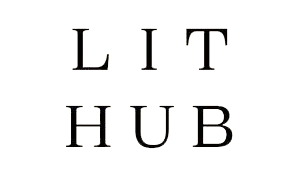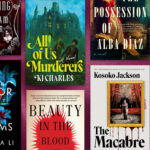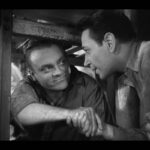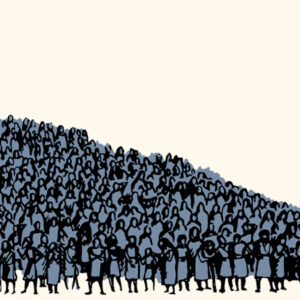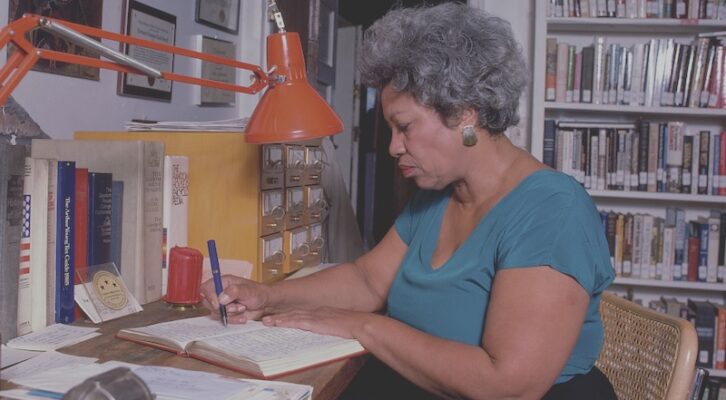
Five incredible books edited by Toni Morrison.
Header image via Bernard Gotfryd photograph collection (Library of Congress)
This month, Farrar, Straus and Giroux is reissuing a spiky, forgotten jewel of a book. You may not know the author by name yet, but you’ll recognize her acquiring editor: Toni Morrison.
Maybe you already know that while writing her first few books, Morrison held down a day job at Random House. She eventually left publishing—she was burnt out by the marketplace, and needed to go paint her own masterpieces. But during her editorial tenure she discovered and championed a number of wild, wonderful voices. Many of whom really should be on your radar today.
In honor of the resurrection of Nettie Jones, here are a few more treasures straight from the master’s list.
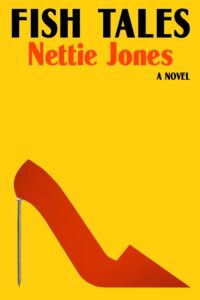
Nettie Jones, Fish Tales
Nettie Jones’ Fish Tales was first published in 1984. Narrated by a “wily, unhinged woman named Lewis Jones, who ricochets between night clubs and sex parties in a haze of champagne, vodka and Valium,” this utterly singular, vignette-driven novel has been called erotic, assaultive, edgy, and “legitimately shocking.” Morrison apparently had a tough time selling it to higher-ups at Random House. She quit her job later that year to focus on her own writing projects.
Though the novel fell into obscurity after its splashy debut, it’s since had champions. Darryl Pinckney once considered it in the NYRB alongside another metropolitan party chronicle—Jay McInerney’s Bright Lights, Big City. And this month’s snappy-looking FSG reissue has garnered praise from writers like Angela Flournoy, Justin Torres, and Raven Leilani.
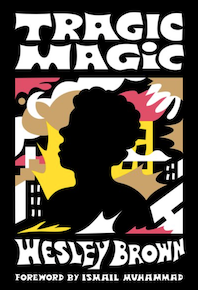
Wesley Brown, Tragic Magic
This was another Morrison find. First published in 1978, this dazzling book follows Melvin Ellington—aka, The Mouth—over the course of his first day out of prison after serving a draft-dodging bid. James Baldwin praised the prose, calling Brown “one hell of a writer.”
Recently republished as part of McSweeney’s Of the Diaspora series, this short firework of a book is also ripe for reconsideration. In the Southeast Review, Aram Mrjoian praised its style, enduring relevance, and Brown’s “line-level risks, intellectual depth, and wide-ranging cultural and political subject matter.”

Leon Forrest, There is a Tree More Ancient Than Eden
Vivid, enraged, acerbic, and poetic, Forrest’s voice really deserves a louder spot in the canon. There is a Tree More Ancient Than Eden, the first novel in his Forest County series, follows “an orphaned, would-be prophet and chronicler” trying to make sense of American History. This jazzy 1973 debut is set in a fictionalized version of Chicago’s South Side, and spelunks through several dark nights of the soul.
Morrison discovered Forrest, and edited all three books in his initial trilogy. He was sometimes compared to William Faulkner for his arias in text, and other fans included Saul Bellow and Ralph Ellison. Forrest’s best known epic, Divine Days, was reissued two years ago. But I think the trilogy should be next.

June Jordan, Things that I do in the dark
Did you know that Toni also edited poetry? (What couldn’t she do!) Despite inexperience with the medium, Morrison was an early champion of the poet June Jordan. She published one of her earliest collections, Things I Do in the Dark, in 1977.
In a 1975 letter, Morrison told Jordan that Random House would publish her work, but only under duress. “The answer they gave was ‘we would prefer her prose—will do poetry if we must,'” she wrote. “Now I would tell them to shove it if that were me…” She and Jordan would go on to work as peers in the The Sisterhood, a star-studded salon that aimed “to use literature for Black women’s liberation.”
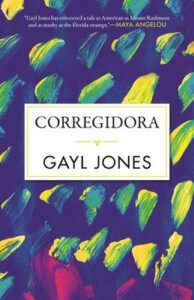
Gayl Jones, Corregidora
This masterful, thorny novel follows Ursa, a Kentucky jazz singer, on a quest for “defiant survival.” It’s hard to describe this peerless book, but I’ll say that it’s both exciting to read and unflinching about ancestral trauma.
Imani Perry called Jones “one of the most versatile and transformative writers of the 20th century.” In a New York Times survey of her work, she praised Corregidora for showing that the “terror of now is as important a subject for the Black imagination as a speculatively beautiful tomorrow.”
All this is just the tip of an editorial iceberg. It should be a shock to no one that Morrison had good taste. (She also edited Toni Cade Bambara, Angela Davis, and Barbara Chase-Riboud.)
And when asked about her roving place in publishing, Morrison clapped back. “People used to say how come you do so many things? It never appeared to me that I was doing very much of anything; really everything I did was always about one thing, which is books. I was either editing them or writing them or reading them or teaching them, so it was very coherent.”
Thank goodness for that.
Brittany Allen
Brittany K. Allen is a writer and actor living in Brooklyn.








